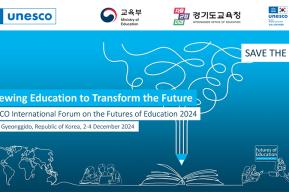Educational Quality (SDG-4) and Gender Equality (SDG-5) are two key issues that intersect not only with each other but also with the remaining 15 Sustainable Development Goals, and are therefore key enablers of achieving the 2030 Agenda for Sustainable Development.
UNESCO through its Regional bureau for Science and Culture will release two studies that explore these important issues that lie at the SDG4-SDG5 intersection in South-East Europe (SEE), and selected Mediterranean countries under the its geographic purview.
Despite the progress, persistent disparities and challenges remain to be addressed to ensure that both quality education and gender equality are to be achieved for all girls, boys, women, and men. Such critical issues as educational participation and attainment, out-of-school children, the exclusion of marginalized populations, learning achievements, access to tertiary education, STEM (Science, Technology, Engineering, Math) fields and research, the teaching profession, harmful practices and social norms were analyzed in comparative perspective.
While SEE countries have come very close to achieving gender parity in primary and secondary education, certain gaps are still evident. More concerning, however, are educational attendance rates, which overall show gender parity but, when analyzed by urban or rural location and wealth quintile, show gender gaps as large as 17% at the expense of girls at the primary level.
This raises concern about the factors beyond enrollment that impede participation in education for girls in SEE. Despite almost parity in transition rates, completion rates are lower among girls than boys in basic education, and dropout rates are higher among girls at certain levels and in certain countries, such as Bosnia and Herzegovina and Montenegro, having multifaceted and complex consequences on future opportunities and well-being.
Similarly, on average in SEE, the completion rate in post-secondary education is higher among women than men, but completion rate is lower on average among girls in basic education. As with most indicators for sustainable development, the situation is more concerning when gender is considered with other characteristics, including disaggregation per disability, rurality, ethnic minority status, or mobility, including internally displaced populations.
In the Mediterranean, Cyprus, Greece, Malta, and Turkey have their specifics. In particular, participation, attendance, and attainment represent only those who access education, but these 4 Mediterranean countries have more than 2 million children who are out-of-school (OOS). Among these countries, pre-primary and primary aged OOS children remain most consistently a concern, with other level-specific needs changing by country.
Attendance rates become more disconcerting when disaggregated by socioeconomic status and rurality, and addressing the intersectionality of gender inequality with other factors and closing gender gaps among subpopulations will help to ensure that all girls and boys - especially those with disabilities, those from ethnic and linguistic minorities, and asylum seekers and refugees -access and fully participate in high-quality, inclusive education.
Gender inequality persists at all levels of educational attainment, as lower percentages of women than men have completed basic education in all four countries. These 4 countries - with the exception of Cyprus at specific educational levels - see even smaller percentages of women with post-secondary degrees, and see, on average, women constituting only 36 % of all STEM graduates of tertiary education across the four countries.
The studies have received a positive feedback from the multistakeholder audiences and partners within the Beijing+25 process and methodologically stimulated similar intersectoral analyses between various SDGs.
The Intersection of gender equality and quality education in four Mediterranean countries: a regional situation analysis of the nexus between SDG4 and SDG5 in Cyprus, Greece, Malta, and Turkey
https://unesdoc.unesco.org/ark:/48223/pf0000372655









